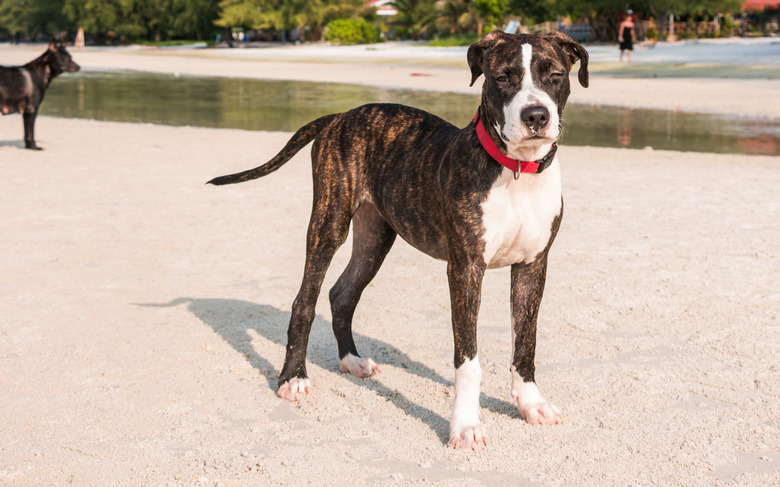What Is Happy Tail Syndrome?
There are few things more synonymous with joy than a dog's wagging tail. However, tail wagging isn't always a good thing. In some instances, excited tail wagging can hurt your dog and develop into a condition called Happy tail syndrome. While this "sounds fun," it's a frustrating and painful condition for dogs.
What is happy tail syndrome?
What is happy tail syndrome?
Dogs use their tails to communicate their emotions. A dog's tail is a body language indicator that is helpful to observe and can tell you a lot about how your dog is feeling. Unfortunately, tail wagging isn't always a good thing. Happy tail is a common tail injury that occurs when a dog is vigorously wagging their tail and repeatedly hitting their tail or the tip of their tail against a hard surface — leading to an injury. Hard surfaces like the corner of a coffee table, a wall, or the inside of a crate are all common sources of happy tail injuries
When a dog's tail hit a surface repeatedly, the thin skin of the tail can split and become injured. The blood vessels can rupture as a result. The injury sounds minor but it can be alarming. These small tail injuries tend to bleed profusely and can end up splattering blood through the house as a dog wags — even long after the injury. It is common for these injuries to reopen, and they can be difficult to heal.
Dog breeds that are likely to experience happy tail syndrome
Dog breeds that are
likely to experience happy tail syndrome
Happy tail is a condition that tends to impact certain dog breeds more than others. Dogs with quieter and more reserved temperaments are less at risk for happy tail syndrome. Dogs with heavily coated tails also don't tend to experience happy tail injuries, because their tail has more padding and protection. Similarly, dogs with short or curly tails (that curve over the back) generally don't experience happy tail injuries.
Dogs that are most predisposed to happy tail injuries are those with excitable temperaments. They also have long and thin tails. Breeds that commonly experience this injury include Labradors, Great Danes, Greyhounds, Dobermans (if their tails were not docked as puppies), American Pitbull Terriers, other pit bull-type mixes, some pointer dog breeds, and other sporting dog breeds.
How can you prevent a happy tail in dogs?
How can you prevent a
happy tail in dogs?
Happy tail can be challenging for dog owners to prevent. One of the best ways to prevent happy tail-related injuries is to remove sharp-ended coffee tables and other furniture items in your home. You can also focus on encouraging calm behavior and reactions from your dog by treating and rewarding them. When your dog offers calm behavior, reward them — especially near your furniture and walls.
Some dog owners find that proactive bandaging of their dog's tail can help prevent injuries. A pool noodle that is split down the middle, slid onto the tail, and secured with bandages can be useful in offering a protective layer for dogs who are prone to happy tail syndrome.
Treatment options for dogs suffering from happy tail syndrome
Treatment options for
dogs suffering from happy tail syndrome
The healing process for happy tail syndrome can be slow. Exuberant dogs often continue to wag their tails which can easily lead to a re-injury. The treatment will vary depending on the severity of the happy tail injury. In some cases, bandaging the tail (to immobilize the injured area) with antibiotic medication will help the wound to heal properly.
In the most severe cases of happy tail syndrome, an injury does not heal. This is due to the reopening of a wound from constant tail wagging. A veterinarian may recommend a surgical procedure to dock or surgically shorten a dog's tail. If you are concerned about tail injuries or think your dog might have a happy tail-related injury, it's important to contact your dog's veterinarian right away.
In summary
In summary
Happy tail syndrome is a condition that can occur when exuberant long, thin-tailed dogs are excited and hit their tails repeatedly. This is often against furniture corners or walls. This leads to the rupturing of blood vessels and injures the thin skin of the tail. These tail injuries can be slow and difficult to heal because of a dog's tendency to re-injure themselves from tail wagging. In some cases, happy tail syndrome can be prevented by rewarding and encouraging calm behavior. However, some dogs are predisposed physically and temperamentally to this injury. If your dog has any kind of tail injury bring them to a veterinarian.


